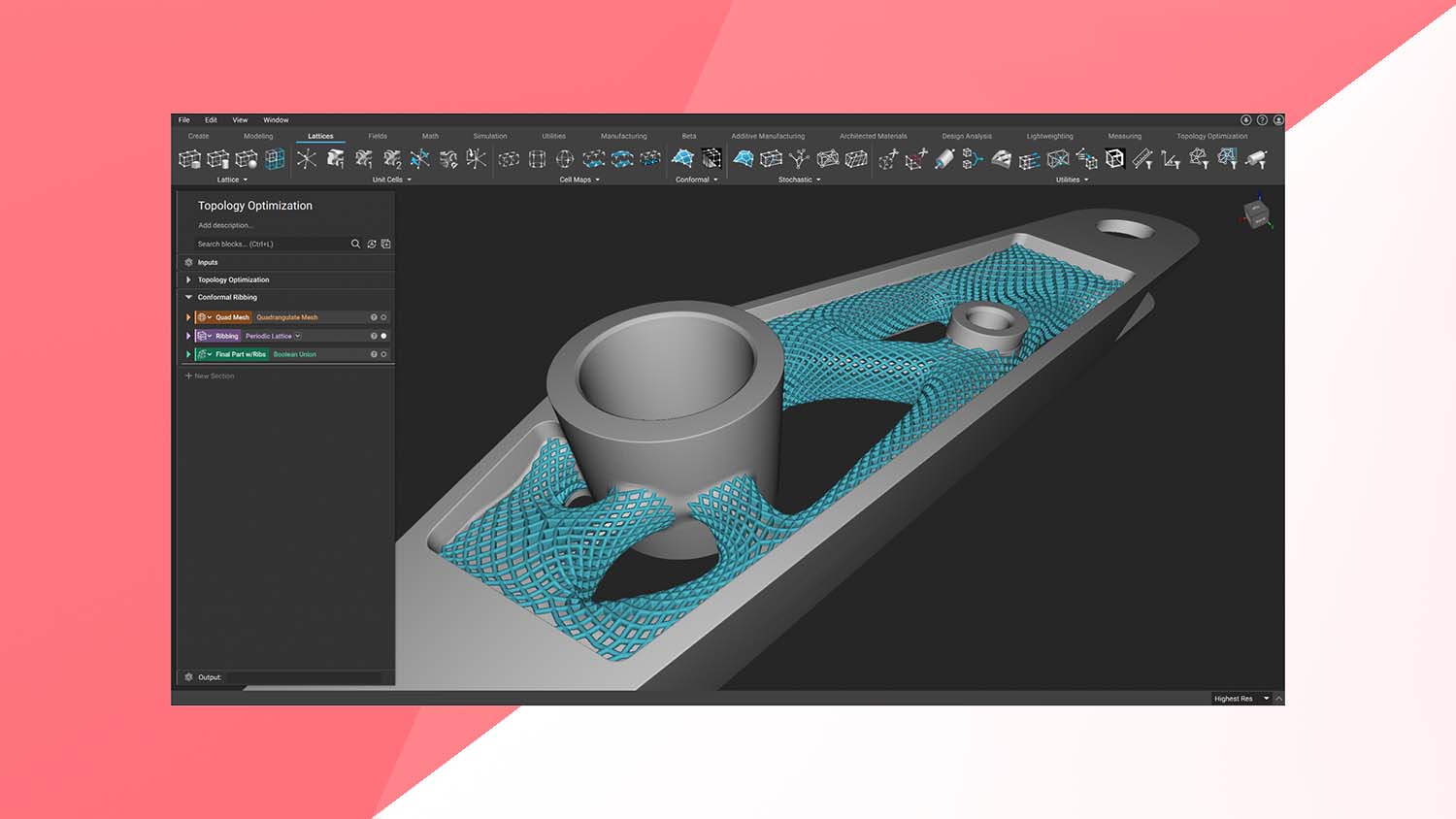nTopology latticing technology has now launched in its third iteration, packing in extra speed and greater control over more complex lattice structures.
In development for the past 22 months, nTopology says that the 37 blocks included in the update have been perfected with user feedback – and have already been in use by some 45 per cent of nTopology users before the full release.

The update of nTopology’s lattice tools sees the lattice generation processes split into three fundamental steps: select a unit cell, define the cell map, and control lattice parameters, such as thickness.
The company says that these steps makes it faster and more intuitive to learn how to apply advanced latticing and DfAM techniques later, while making the process for existing users a more streamlined experience.
In one benchmark example, nTopology says it was able to take a lattice of 50,000+ unit cells, which used to take 45-60 seconds to generate on a well-equipped laptop, and was able to rebuild it using the third generation latticing technology in 1-2 seconds.
In an updated Lattices tab, users can now find three blocks that enable them to replicate the outputs of workflows using the old latticing technology. These blocks can be used to transition existing workflows to the new latticing technology at the users own pace.
There’s an abundance of new capabilities to help experienced users streamline lattice design and optimisation, helping create performance-driven lattice generation processes that have engineering requirements already built into the model.
New warping tools allow users to apply Field-Driven Design techniques to control the lattice cell map the same way you are able to control its thickness. Combining this feature with real-time visualisation enables users to precisely tune complex shapes or even design conformal lattices.
Lattice generation now follows a unified workflow whether working with a graph, TPMS, or custom unit cell. This feature makes it simpler to rapidly iterate between different lattice types, saving time and assisting the set up for computational Design of Experiments for optimisation.
New filtering utilities enable nTopology to select lattice beams based on specific criteria like length, angle, connectivity, or thickness. This capability allows users to spatially control certain parameters of your lattice structures and optimise them for manufacturing.

Elsewhere, the software can now create cell maps that conform to the surface of a quad mesh, creating surface lattices to enable conformal rib grids that increase the stiffness of bodies, even with complex or organic shapes.
nTopology also gave some insight into future tools that it will apply to its latticing technology, with the software development team currently testing new tools to automatically generate lattice structures optimised for your specific engineering requirements, such as targeted stiffness or weight.
Additionally, adding custom graph unit cells is on the cards – should users not find a unit cell type tnot already covered by the over 30 built-in unit cells. The aim is to allow users to sketch a custom unit cell and define the associated design parameters, including beam thickness, length, fillet radii, and more.
Another future step is to build on nTopology’s conformal lattice generation capabilities to complement the existing conformal latticing tools. Users will soon be able to design lattice cell maps that conform to multiple surfaces or organic volumes.






